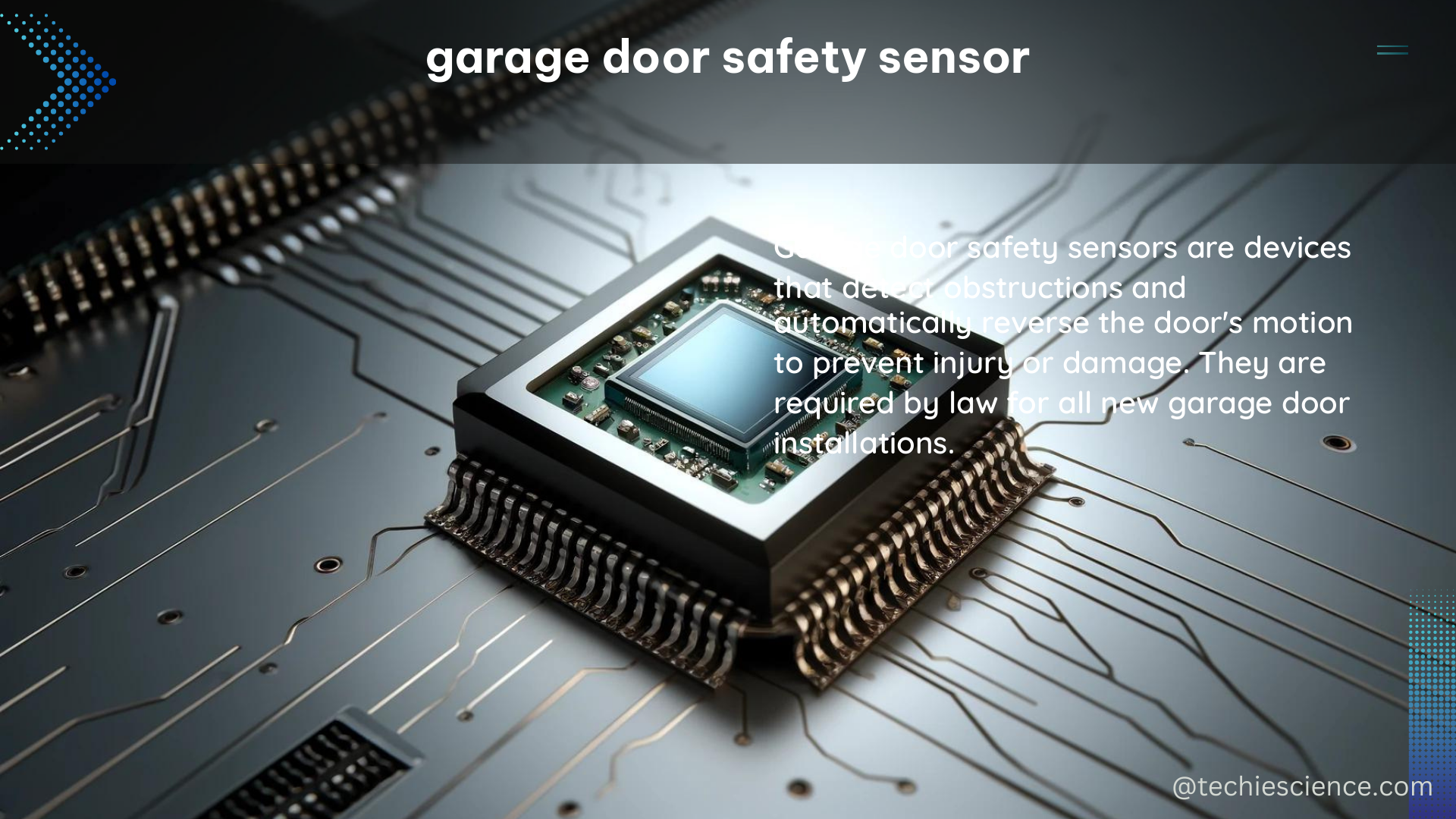Garage door safety sensors are a critical component of any garage door system, ensuring the safe and efficient operation of the door. These sensors emit an infrared beam across the door’s path and prevent the door from closing if an object or person is detected in its way. Understanding the technical specifications, proper installation, and maintenance of these sensors is crucial for ensuring the safety and reliability of your garage door.
Sensor Alignment: The Key to Effective Safety
One of the most critical aspects of garage door safety sensors is their alignment. Proper alignment is essential for the sensors to function correctly and prevent the door from closing if an object or person is in the way. Misalignment can be caused by various factors, including dust, debris, or physical damage to the sensors.
To ensure proper alignment, the sensors should be installed no more than 6 inches off the ground and pointed directly at each other. The distance between the sensors should be within the manufacturer’s recommended range, typically between 6 to 15 inches. If the sensors are not aligned correctly, the door may not close, and the safety feature will not function properly.
In some cases, the sensors may appear to be aligned, but the MyQ app or other smart home systems may still indicate a misalignment error. This can be due to a variety of issues, such as loose wiring connections or problems with the start and end points of the garage door opener. It’s essential to follow the manufacturer’s instructions carefully and use a laser level or other precision tools to ensure accurate alignment.
Sensor Maintenance: Keeping Your Garage Door Safe

In addition to proper alignment, it’s crucial to keep the garage door safety sensors clean and free of debris. Over time, dust and dirt can accumulate on the sensors, interfering with their ability to detect objects in the door’s path. Regular cleaning and maintenance can help ensure that the sensors are functioning correctly and that the garage door is safe to operate.
To clean the sensors, use a soft, lint-free cloth and a mild cleaning solution. Avoid using abrasive cleaners or materials that could scratch the sensor’s surface. It’s also important to check the sensor’s wiring and connections for any signs of damage or wear and tear.
Technical Specifications: Understanding the Sensor’s Capabilities
Garage door safety sensors typically have a detection range of around 6 to 15 inches and operate on a voltage of 120V AC. They use an infrared beam to detect objects in the garage door’s path and are designed to be highly responsive, with a response time of less than one second.
The sensors are also designed to be resistant to interference from other devices, such as lights or radios, to ensure accurate detection. This is achieved through the use of specialized circuitry and signal processing algorithms.
Table: Typical Technical Specifications of Garage Door Safety Sensors
| Specification | Value |
|---|---|
| Detection Range | 6 to 15 inches |
| Operating Voltage | 120V AC |
| Sensor Type | Infrared Beam |
| Response Time | Less than 1 second |
| Interference Resistance | High |
Bypassing or Emulating the Safety Sensors
In some cases, it may be necessary to bypass or emulate the garage door safety sensors. This can be done using an ATTiny85 microcontroller, an N-type mosfet, a 7805 regulator, and a few capacitors and resistors. This setup can emulate the “all clear” signal and allow the garage door opener to operate without the sensors.
However, it’s important to note that bypassing the safety sensors should only be done as a last resort and with extreme caution. Doing so can compromise the safety of the garage door and put people and property at risk. It’s always recommended to maintain the safety sensors and ensure they are functioning correctly.
Conclusion
Garage door safety sensors are a critical component of any garage door system, ensuring the safe and efficient operation of the door. Understanding the technical specifications, proper installation, and maintenance of these sensors is essential for DIY enthusiasts and homeowners alike.
By following the guidelines outlined in this comprehensive playbook, you can ensure that your garage door safety sensors are properly aligned, clean, and functioning at their best. Remember, the safety of your family and property should always be the top priority when it comes to your garage door.
References:
– Solving the Garage Door Opener Safety Sensor Problem [DIY] – OZ (2011-01-07)
– MyQ App says misaligned sensors, but the sensors are not misaligned. (2023-04-24)
– Garage Door Safety Sensors Troubleshooting – YouTube (2020-06-20)
– Garage door safety sensors – Home Automation – Arduino Forum (2012-04-30)
– bypassing/emulating garage door opener safety sensors (2014-09-25)

The lambdageeks.com Core SME Team is a group of experienced subject matter experts from diverse scientific and technical fields including Physics, Chemistry, Technology,Electronics & Electrical Engineering, Automotive, Mechanical Engineering. Our team collaborates to create high-quality, well-researched articles on a wide range of science and technology topics for the lambdageeks.com website.
All Our Senior SME are having more than 7 Years of experience in the respective fields . They are either Working Industry Professionals or assocaited With different Universities. Refer Our Authors Page to get to know About our Core SMEs.